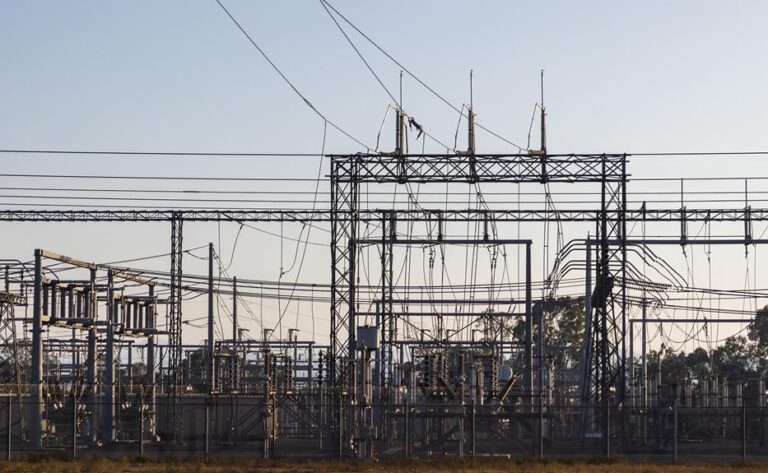Maximizing Control: The Benefits of Drivetrain Lockers
As serendipity would have it, the key to optimal vehicle control lies in an often overlooked component: the drivetrain locker. This critical element bolsters off-road performance, ensuring steady traction even in the harshest terrains. This article explores the pivotal role drivetrain lockers play in enhancing vehicle control, comparing various types, and offering practical applications and maintenance tips for these unsung heroes of automotive performance. Unleash your vehicle's full potential with the power of drivetrain lockers.
Key Takeaways
- Drivetrain lockers enhance off-road capabilities and improve a vehicle's performance on challenging terrains.
- They ensure efficient translation of engine power into wheel torque, even in demanding conditions.
- Drivetrain lockers result in superior control and maneuverability on rugged terrains.
- They minimize the chance of wheel spin, ensuring maximum traction.
Understanding Drivetrain Lockers: A Basic Overview
Before delving into the intricacies of drivetrain lockers, it is crucial to spend some time understanding their fundamental mechanics and functions. These are specialized mechanisms integrated into the drivetrain system of a vehicle, designed to increase traction by locking the differential gears. They play an essential role in enhancing a vehicle's off-road capabilities.
Drivetrain lockers are a key component in drivetrain upgrades, often considered by off-road enthusiasts seeking to bolster their vehicles' performance on challenging terrains. They operate by ensuring that the torque is equally distributed between the wheels, preventing wheel spin and thus enabling better traction.
Transmission modifications, paired with drivetrain lockers, can drastically transform a vehicle's performance. In standard transmissions, power is often lost due to the differential allowing wheels to spin at different speeds. Lockers mitigate this issue, ensuring optimal power delivery to the wheels, thereby enhancing traction and control.
For those desiring liberation from the limitations of standard drivetrains, understanding the function and benefits of drivetrain lockers is pivotal. These upgrades not only improve off-road capabilities but also significantly increase the vehicle's overall performance and reliability.
The Role of Drivetrain Lockers in Off-Road Driving
Why, then, are drivetrain lockers so indispensable for off-road driving, and how do they enhance vehicle performance on challenging terrains? The answer lies in the key function of drivetrain lockers – to provide the optimal distribution of torque to the wheels. This is especially vital in off-road situations where traction is often compromised.
Drivetrain lockers, when combined with a torque converter upgrade, ensure that the engine's power is efficiently translated into wheel torque, even under the most demanding conditions. This is achieved by locking the differential, making both wheels turn at the same rate regardless of the traction available. This results in superior control and maneuverability, which is essential when navigating through rocky paths, steep inclines, or muddy trails.
Moreover, the use of a transmission shift kit further enhances the functionality of drivetrain lockers. It improves the shift timing, enabling smoother and quicker gear changes. This is particularly beneficial when off-roading, as it allows for improved response times to sudden changes in terrain.
Key Benefits of Drivetrain Lockers for Vehicle Control
Both on-road and off-road, drivetrain lockers offer numerous advantages, enhancing overall vehicle control and performance significantly. These mechanical devices provide an equal distribution of power to both wheels on an axle, ensuring maximum traction and minimizing the chance of wheel spin.
Here are a few key benefits of drivetrain lockers:
- Improved Traction: Lockers optimize wheel performance by ensuring both wheels spin at the same rate, regardless of the terrain. This results in better control and stability, particularly important when navigating challenging off-road conditions.
- Enhanced Off-Road Performance: Drivetrain lockers are virtually indispensable for off-roading, providing the necessary control and power to tackle steep slopes, deep mud, and rocky trails.
- Increased Power Delivery: By locking the axle, power from the engine is evenly distributed to both wheels, leading to more efficient power usage and improved overall performance.
- Greater Vehicle Control: Drivetrain lockers reduce the risks associated with unpredictable terrain, enabling drivers to maintain control and handle unexpected situations with ease.
How Drivetrain Lockers Influence Vehicle Performance
Drivetrain lockers, pivotal in enhancing vehicle performance, provide superior traction and power distribution, and their influence is evident both on and off the road. By locking the differential, these components ensure that the torque is equally distributed to both wheels, even if one loses contact with the surface. This yields improved traction, facilitating smoother navigation over challenging terrains such as rocks, mud, or snow.
Analytically, we can say that drivetrain lockers augment the vehicle's off-road capabilities. Where a standard differential would allow one wheel to spin freely when it loses traction, a locked differential forces both wheels to turn in unison. This maximizes the power sent to the wheel with grip, enhancing control and stability.
Moreover, in specific situations requiring rapid acceleration or deceleration, drivetrain lockers optimize power transmission, contributing to a more responsive and reliable performance. This ability to adeptly handle varied and demanding conditions liberates drivers, granting them the confidence to venture where standard vehicles dare not tread.
As we delve deeper into the realm of drivetrain lockers, it's crucial to compare and contrast different types, which we will explore in the subsequent section, 'Comparing Different Types of Drivetrain Lockers'.
Comparing Different Types of Drivetrain Lockers
Several types of drivetrain lockers exist, and understanding their unique features and functionalities is essential for making an informed decision. These drivetrain lockers have distinct operational mechanics that influence vehicle control and performance.
Let's explore the key differences:
- Selectable Lockers: These provide the option of fully locking or unlocking the differential. They are activated manually, often via an electrical or pneumatic switch. Their versatility makes them an excellent choice for various terrains.
- Automatic Lockers: These lock the differential automatically when torque is applied. They are favored for their simplicity and reliability, although their unpredictable locking can be challenging in certain conditions.
- Limited Slip Differentials (LSD): LSDs allow for a degree of wheel spin difference while distributing torque to both wheels. They are useful for maintaining control during high-speed driving or on slippery surfaces.
- Spools: A spool is the simplest form of a locker. It permanently locks both wheels together, offering maximum traction but making normal cornering difficult.
Each type of locker has its specific advantages and trade-offs, all aimed at enhancing driving control and performance. By understanding these differences, one can select the most appropriate locker for their driving needs.
Practical Applications: When to Use Drivetrain Lockers
Understanding when to employ drivetrain lockers is crucial, as different situations require varying levels of vehicle control and traction. Drivetrain lockers can be used in various terrains and conditions, each with their own unique challenges.
The table below presents the practical applications of drivetrain lockers in different scenarios:
| Terrain/Condition | Need for Traction | Drivetrain Locker Use |
|---|---|---|
| Mud/Snow | High | Highly Recommended |
| Steep Inclines | Moderate to High | Recommended |
| Rocky Terrain | High | Highly Recommended |
| Flat, Dry Roads | Low | Not Recommended |
| Sandy Terrain | High | Highly Recommended |
In muddy or snowy conditions, drivetrain lockers provide the traction necessary for the vehicle to move forward without getting stuck. Steep inclines require a moderate to high level of traction, making the use of lockers recommended. For rocky terrain, lockers are highly recommended due to the high need for traction. On flat, dry roads, the need for traction is low, making the use of lockers generally unnecessary. Finally, in sandy terrains where traction is critical, the use of drivetrain lockers is highly recommended.
Using drivetrain lockers appropriately can greatly enhance your vehicle's performance and control, ensuring you conquer any terrain with ease.
Maintenance and Care Tips for Drivetrain Lockers
Proper maintenance of your drivetrain lockers is both a crucial aspect of ensuring sustained performance and a fundamental practice in extending their lifespan. Regular inspection and timely maintenance can prevent potential issues, while ensuring your vehicle operates at optimum capacity.
Here are some maintenance and care tips to keep in mind:
- Regular Inspection: Check for any signs of wear, tear or damage frequently. Look for leaks and ensure the locker is lubricated properly.
- Lubrication: Lubrication is key to smooth operation. Use a high-quality, high-viscosity gear oil to maintain proper lubrication.
- Cleaning: Keep the locker clean from dirt, debris, and moisture. These elements can cause corrosion, impairing the locker's performance.
- Professional Servicing: At least once a year, have a professional mechanic inspect your locker. They have the tools and expertise to identify and fix potential issues early.
Frequently Asked Questions
What Is the Approximate Cost of Installing Drivetrain Lockers Into a Vehicle?
The estimated cost of installing drivetrain lockers in a vehicle varies widely, typically ranging from $500 to $2000. This cost is influenced by factors such as locker type, vehicle make, and labor fees.
Are There Any Potential Downsides or Risks Associated With Using Drivetrain Lockers?
While drivetrain lockers enhance vehicle control, potential downsides include increased tire wear, difficulty in turning, and strain on the drivetrain. Therefore, careful consideration should be given before deciding on their installation.
How Long Does It Typically Take to Install a Drivetrain Locker?
The installation time for a drivetrain locker can vary, depending on the vehicle's make and model. However, it typically takes about 4 to 6 hours for a professional to complete this procedure under standard conditions.
How Common Is It for Vehicles to Come Pre-Installed With Drivetrain Lockers?
While it's not a standard feature, certain off-road and performance vehicles do come pre-installed with drivetrain lockers. This offers drivers enhanced traction control, ideal for navigating challenging terrain or executing precision maneuvers.
Can Drivetrain Lockers Be Installed in Any Vehicle or Are There Specific Requirements Needed?
Drivetrain lockers can be installed in most vehicles; however, specific requirements must be fulfilled. These include the vehicle's drivetrain type, axle specifications, and compatibility with existing hardware. Expert consultation is recommended for accurate assessment.
Conclusion
In conclusion, drivetrain lockers exhibit immense influence on vehicular control and performance, particularly in off-road conditions. They offer pivotal advantages, from enhanced traction to improved handling. Varied types cater to specific needs, underscoring their practical relevance. However, their efficacy is contingent on proper maintenance and care. Thus, a thorough understanding of drivetrain lockers is integral for optimizing their benefits and ensuring superior vehicular operation.







